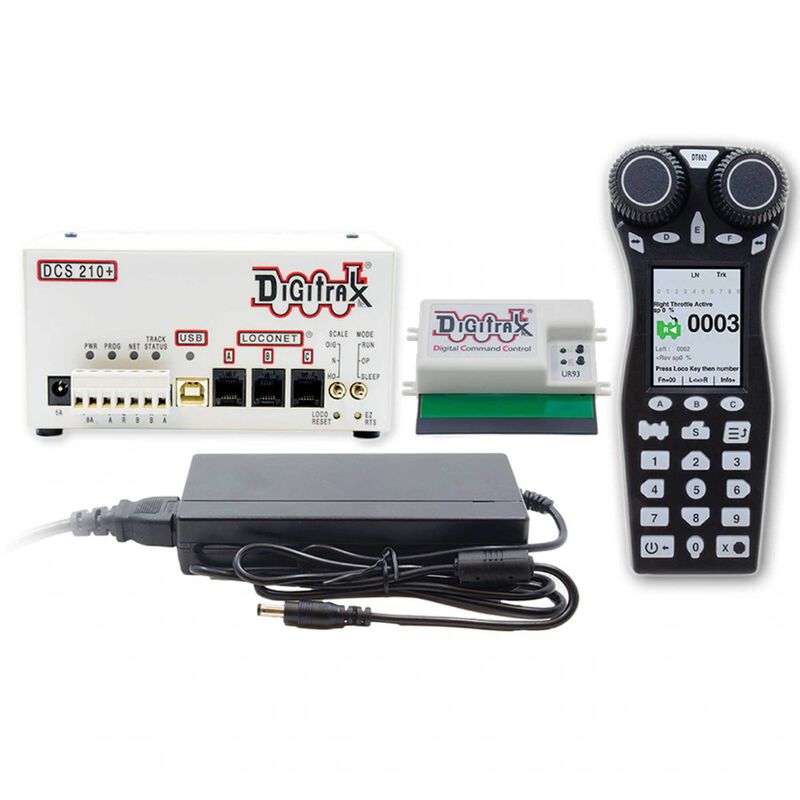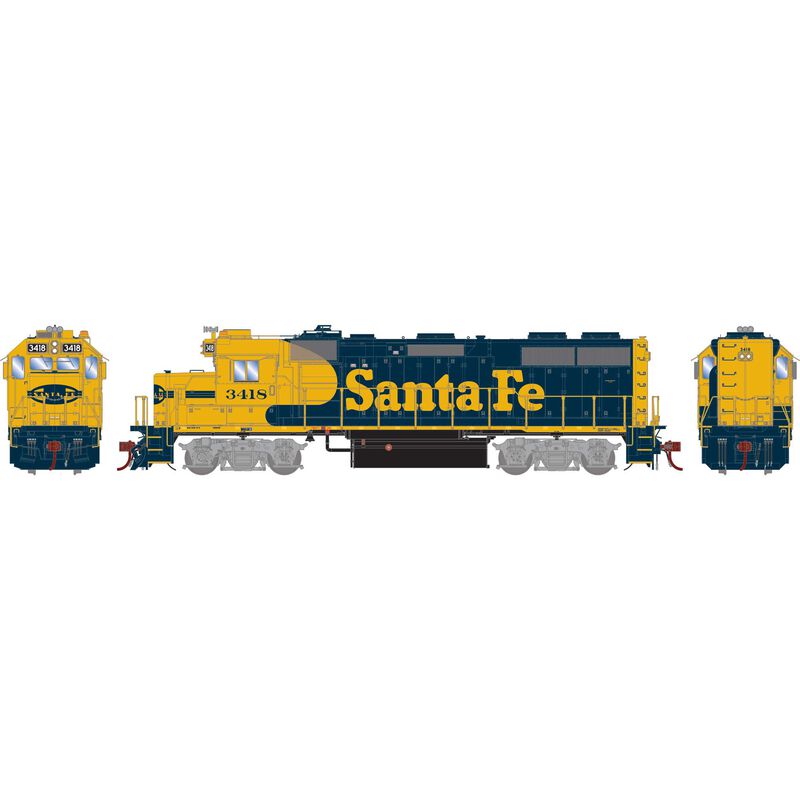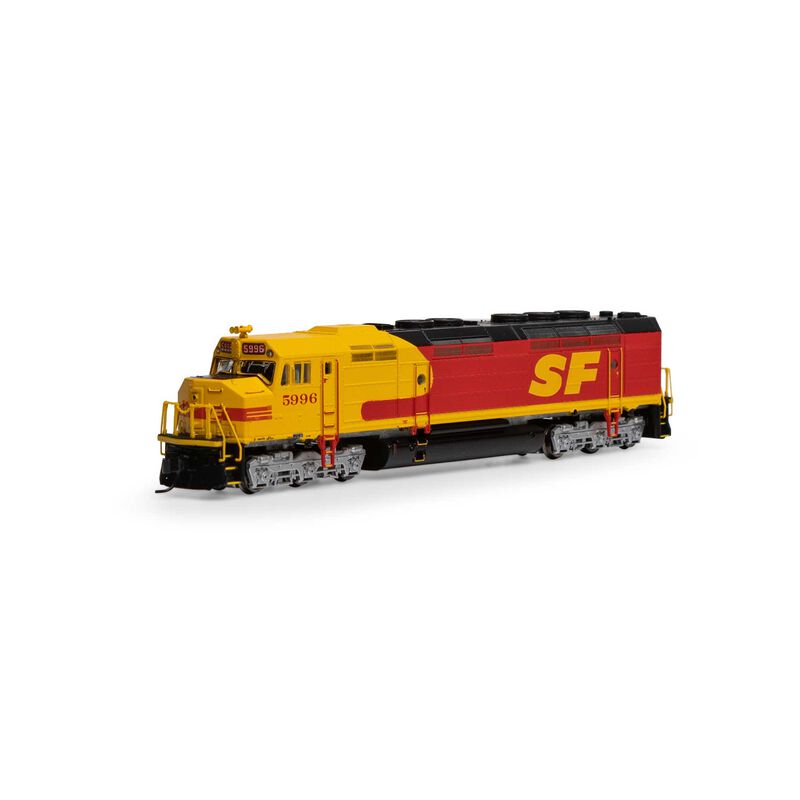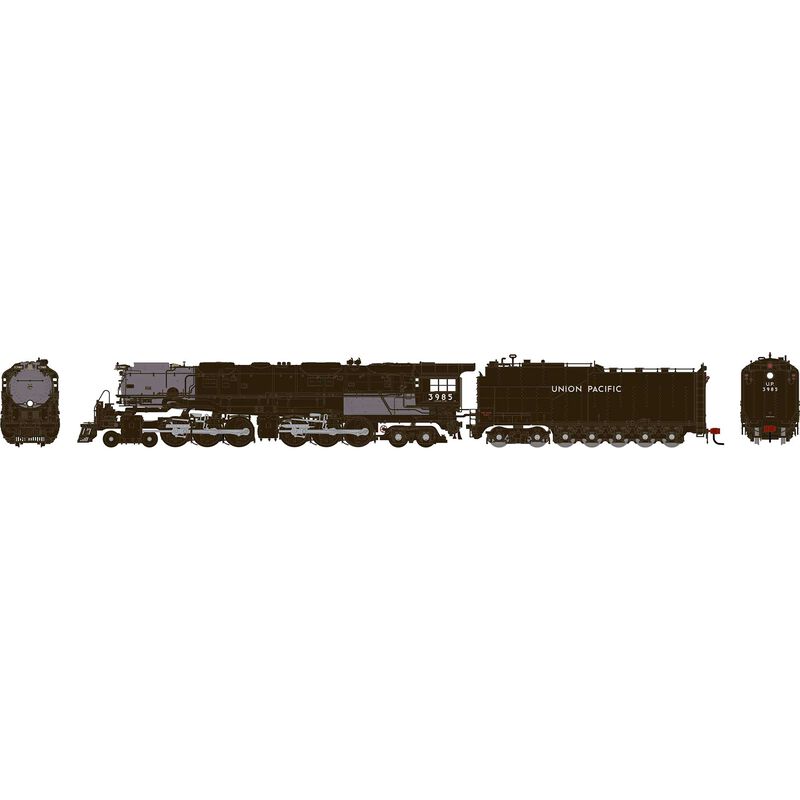Posted: 10/18/22
Setting up Your First Model Railroad
Do you have a vision of your perfect model railroad setup?
Is it a series of tracks that stretches across your floor or tabletop, with intricately detailed scenery depicting a bygone era? Or maybe it's just a collection of locomotives and rolling stock sitting on a shelf in your living room? If you're new to model trains and want to learn about setting up your first model railroad, read on to learn about the different sizes and options to find out which one is right for you.
First off, several fantastic trainsets are available from many manufacturers, so it's easy to pick up everything you need in one package for a model railroad. These allow anyone who isn't particularly handy with a soldering iron to enjoy the fun of building their model railroad. Kits can be found year-round but are especially plentiful during the holidays.
Unless you are looking for just a simple kit, it's never as easy as just heading out to your local hobby shop and buying a locomotive, some cars, and track. In fact, planning everything down to the tiniest detail is more than half of the fun. Deciding what kind of model railroad you’d like to put together means figuring out your budget and, even more importantly, your space. Knowing your space requirements goes a long way in figuring out the best scale.
Seasoned model train enthusiasts understand the different scales and gauges. A newbie looking to get started in the hobby might not even know what scale and gauge mean. In short, scale is the model train’s relative size relative to a full-size train, and the gauge is the distance between the rails. As the measurements change, they are referred to by a lettered scale—G Scale, O Scale, S Scale, HO Scale, N Scale, and Z Scale.
| Model | Scale | Gauge |
|---|---|---|
| G | 1:25 | 1.75 inches |
| O | 1:48 | 1.25 inches |
| S | 1:64 | .875 inches |
| HO | 1:87 | .625 inches |
| N | 1:160 | .375 inches |
| Z | 1:220 | .25 inches |
The earliest model trains were little more than toys and did not have a specific scale. Over 150 years, different scales were created as American and European manufacturers created standards, and the more common scales were outlined. As the industry evolved, it made sense for everyone to be able to use specific scale tracks interchangeably.
G Scale Model Trains
G Scale is the largest scale in the market and is almost exclusively used outdoors or as part of large indoor displays. Lehmann Grosse Bahn introduced this scale in the 1960s. Because of their size, these trains are perfect for outdoor garden railroads and large indoor displays. Individual trains and accessories for G Scale are limited, and the area needed to construct even the smallest layout is enormous.
O Scale Model Trains
Marklin introduced O Scale around 1900. By 1918, it was one of the most prominent scales produced. O scale model trains primarily run on a three-rail track, which makes it easier to create a complex layout without complicated electrical wiring. Although, there is a scale two rail version as well. These models are excellent for those looking to build a permanent tabletop layout or around the Christmas tree.
S Scale Model Trains
The 1930s saw a rise of smaller model trains, starting with S Scale. One of the popular improvements included running on a more realistic-looking two-rail track instead of the three-rail system. The American Flyer Trains made by A.C. Gilbert Company popularized the scale. Manufacturers are making modern S Scale products for enthusiasts looking to collect vintage American Flyer trains. Still, this scale is not as available as other scales, with limited trains and accessories.
HO Scale Model Trains
HO Scale is the most popular scale, and these trains offer an excellent balance between size and the ability to create a visually exciting railroad. Named HO for being half the size of O, HO Scale trains are known for having a wide range of new and old ready-to-run models. Enthusiasts looking for a specific locomotive or car for an existing layout are bound to find what they need to complete their layout. It is the perfect scale for hobbyists looking to build their arrangements in a small space. Many well-known manufacturers make HO Scale trains, leaving you with endless possibilities for design and themes.
N Scale Model Trains
Even though N Scale trains are one of the more recent scales, they currently rank second only to HO in popularity worldwide. The N refers to nine in relation to the 9mm gauge between the rails of the N Scale track. Large layouts can be built with this scale as the trains are small. Today, N Scale has various trains and accessories available so enthusiasts can create expansive designs even in small spaces.
Z Scale Model Trains
The newest scale and also the smallest, this size was first brought to market in the 1970s by Marklin. The designation of Z was decided upon because they figured no one would create a smaller size. This size is perfect for railroaders looking to create a layout in a small space or a highly detailed small city in a larger area. While the selection of trains and accessories can be limited, several manufacturers are dedicated to producing modern Z Scale trains.
Deciding on a First Model Railroad
Now that you know more about the sizes available and the many options out there, we hope you'll find it easier to decide on your first model railroad setup. There are model trains perfect for large outdoor displays as well as popular scale sizes with the widest variety of options good for smaller setup areas. And what's great about model trains is you can always modify your model railroad as you go.




